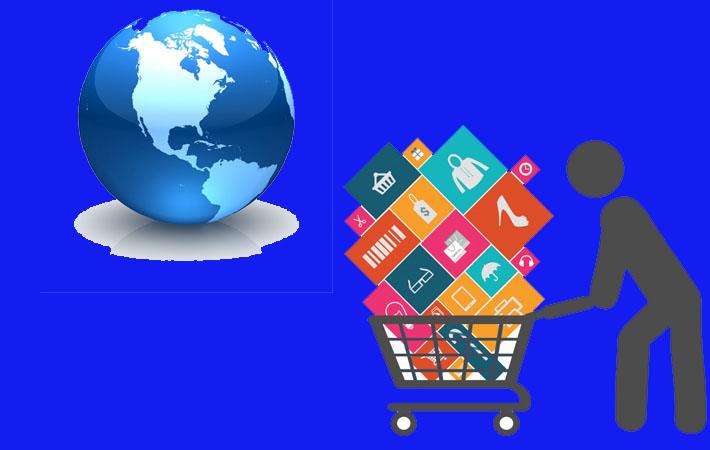Augmenting AI to set the right sales targets
3AI February 20, 2022

Author: Abhishek Bhadra, AVP – Platforms & Offerings (Building AI products for Sales & Commercial value chain with domain expertise in CPG& Retail, Manufacturing & Aftermarket Services), Genpact | LinkedIn – https://www.linkedin.com/in/abhishekbhadra/
Setting the right target
Target setting for the sales force is an age-old problem which is nonlinear and multivariate in nature. If the target is set too low, then the business is leaving money on the table and if its set too high, then it might discourage the workforce from achieving it. Finding the sweet spot in between the two extremes has been the subject of research for scholars, as well as industry experts. Fundamental to this problem is computing and modelling the right sales forecast as a baseline for the target setting exercise.
Deterministic Chaos
Majority of the companies rely on historical sales data (at different levels of granularity) to predict the future sales. Unfortunately, this method oversimplifies the problem and assumes the sales prediction to be a univariate linear equation. However, the sales forecast problem is a nonlinear problem and can be appropriately categorized under the umbrella of “deterministic chaos”. Weather would be a great example of a nonlinear “deterministic chaos”, where we do have models to predict the weather using multiple predictor variables, but a minor change in one of the variables often has a domino effect on the accuracy of the outcome.
Let’s take the example of how the sales of the High-pressure turbine blades of an Aircraft engine are strongly correlated with the rise of migratory birds’ population, like snow geese, in North America. A turbine blade gets typically replaced just twice throughout the lifecycle of an aircraft engine for a large commercial jet and hence the forecast of its sales should be fairly deterministic and linear in nature. However, a not so rare phenomenon called bird aircraft strike hazard (BASH) causes an estimated damage of US$1.2 Billion worldwide to the airliners and a large chunk of that cost goes to replacing turbine blades before its actual end of life. To summarize, an accurate modelling of the future sales of blades used in a jet engine would also require an in depth understanding of the seasonality of bird migration in a specific geographical region.
Challenges faced by the Chief Sales Officer
We established in the last section that forecasting is a nonlinear and multivariate process. However, let’s take a step back and realign on the need of a good forecasting and target setting methodology. To do that, the first step would be to list down the questions, the Chief Sales officer would typically seek answers for:
- What are the historical and current period sales for various products, services?
- How are the actual sales numbers compared to the Operating plan and forecast?
- Which regions are consistently beating the target?
- Which sales representatives are not meeting the target most of the time?
- What is the current market share and what should be the target market share?
- How to accurately forecast the sale of products, services etc. using endogenous and exogeneous variables?
- How to leverage the forecast to set the appropriate targets?
The advent of the Data lake
The foundation to answer all the questions listed in the previous section, lies in a coherent data strategy, using an enterprise data lake. The data lake has the potential to transform businesses by providing a singular repository of all the organization’s data, both structured and unstructured, as well as internal and external. The data lake also enables the business analysts and data scientists to access and mine the organizational data that has been historically scattered across a multitude of systems, data warehouses, data marts and local spreadsheets. Some of the key features of an enterprise data lake would be:
- Centralized, singular, schema-less data store which hosts both raw data as well as massaged data
- Rapid ingestion of data with optimal latency
- Efficient data mapping across various data sources
- Dynamic Data Catalog for easy retrieval
- Highly secured environment with ability to mask and anonymize the data
- Ability to seamlessly integrate analytics sandboxes, data engineering tools, analytics applications, visualization tools, pre-trained AI models, etc.
The data lake architecture enables the AI team to seamlessly develop descriptive, predictive, and prescriptive algorithms using real time data with a wide breadth of features. The next section focuses on the advent of AI to predict future sales and prescribe an optimal target.
AI for prediction
Artificial intelligence is an array of machine learning approaches that rely on computer systems and algorithms to handle specific human tasks. Deep learning is a subset of machine learning inspired by the neural networks in the human brain. It has been around for decades now but the reason it is so popular right now is due to advancement in computing power and availability of large volume of data.
The success of machine learning lies in the art of feature engineering. If the right set of features are handcrafted to predict a certain outcome, then the machine learning algorithm can perform well but finding and engineering the right set of features is not an easy task. With deep learning, such features need not be handcrafted since the layers of the deep learning network can learn the intrinsic features and multi-level abstract representation of data, by itself.
Usage of deep neural networks to predict the future sales can exponentially improve the accuracy of the forecast. The algorithm automatically creates the hierarchy of features that correlates to the outcome. A medical device company recently deployed an AI algorithm which uses an array of features such as historical sales, lead times, regional healthcare spending, consumer price index etc. to accurately predict their future sales.
Optimization vs Heuristics
Once the process of generating forecast through the AI systems are in place, the next step is to optimize the sales target/op plan to boost the productivity of the salesforce and maximize the market share. One popular technique, often employed by businesses, would be heuristic planning, which is a problem solving approach that utilizes practical processes (referred to as “rule of thumb”) to produce a feasible solution that is good enough to quickly solve a specific problem. In contrast, an optimization model, is an automated process to generate an optimal solution to a specific problem.
In case of setting sales target, an optimization algorithm might take into consideration, multiple decision variables such as market share, production level, logistics, inventory, profitability etc. as well as constraints and key performance indicators to achieve optimal performance across geographies.
Conclusion
To summarize, it’s a three-step process to set effective sales targets for any products or services organization:
- Harmonize internal and external data (both structured and unstructured) in an enterprise data lake
- Leverage deep learning algorithms to extract meaningful features from large datasets and produce accurate forecasts
- Use advanced optimization process to set sales targets at various levels of granularity
These three step formulae, with Data and AI at its core, can effectively boost an organization’s revenue, improve profitability, uplift the work-force motivation and significantly reduce the operational planning cycle resulting in major productivity benefits.
Reference:
Allan, John R.; Alex P. Orosz (2001-08-27). “The costs of birdstrikes to commercial aviation”. 2001 Bird Strike Committee-Usa/Canada, Third Joint Annual Meeting, Calgary, Ab. DigitalCommons@University of Nebraska. Retrieved 2009-01-16.






